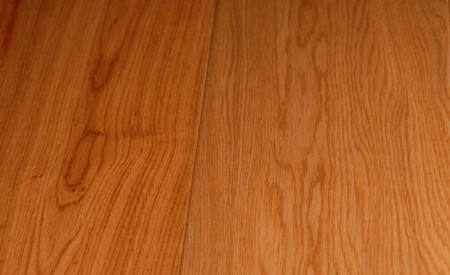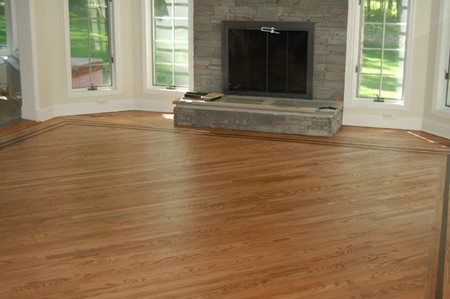You can sand down any old wooden floor – woodblock, mosaic woodstrip or floorboards – but it is almost certain that if you hire a sanding machine you will be working on floorboards, which may have curled at the edges and suffered considerable surface damage after years of use.
PREPARING THE FLOOR
The first thing to do is to empty the room of all furniture and remove any rugs, carpet or other floor coverings. Bear in mind that sanding the floor will create a lot of dust, so take anything else out of the room (such as books on shelves] which you do not want to get covered in dust. Alternatively, you can cover them with a dust sheet sealed at the edges. It is a good idea when sanding to remove the door into the room (so you can get at the floor beneath it), but to seal the door opening with a large plastic sheet taped around the opening on the far side and then to open windows in the room to allow dust to escape while you work.
The first thing to do is to look at the existing floorboards for damp, preferably taking up a couple of boards to inspect the joists as well. Carry out a ‘bounce’ test to make sure the floor is firm. Carry out any remedial treatment and replace any split or damaged floorboards with new ones of the same size.
Now look at the existing floorboard nails. You should be able to see or feel any which are protruding and these should be hammered home below the surface with a nail punch. Where tacks are left in the floor from previous floor coverings, use an old chisel to lever the tacks up and then use a pair of pliers, pinchers or a claw hammer to pull them out. Nails and tacks left in place will damage the sanding belts.
Fill any gaps between floorboards. If the floor is to be varnished afterwards, mix some sawdust with the filler to fill small gaps (or use a coloured filler) so that it blends in with the rest of the flooring.
It is a good idea to remove old floor polish before sanding or it can clog the sanding belt. Use wire wool dipped in white (mineral) spirit to do this. If the floor has been painted, remove at least some of the paint with paint stripper and a scraper first, followed by water or white spirit (depending on the type of paint stripper used). Allow a couple of days for the floor to dry out before using a sanding machine.
USING THE FLOOR SANDER
Before you start, fit a new belt to the sanding machine. Instructions will be provided on how to do this, but normally you have to loosen the screws on the gripper bar so that you can secure the two ends of the sanding sheet under it, passing a single sheet around the drum. With many floors, you will be able to start with a medium-grade sheet, but if the floorboards are curled up at the edges, start with a coarse sheet.
When using a floor sander, make sure that the cable of the machine is safely out of the way over your shoulder and always hold the machine firmly with both hands. Tilt it backwards before you start it and then lower it gently on to the floor. It will try to run away from you, but hold it firmly and walk across the floor with it. When you get to the other side of the room, tilt the machine up again to turn it round.
With curling floorboards, use the sander diagonally across the room, starting in one corner and working across to the opposite corner, going back and forth over each area several times. Then repeat the process sanding diagonally the other way.
When you have levelled out any curled floorboards, change the belt for a medium grade and work up and down the floor parallel with the floorboards. This is where you would start with a floor which was not too badly damaged or when sanding woodstrip or mosaic flooring (which should only ever be sanded lightly); herringbone-pattern parquet block flooring should be sanded diagonally in line with the individual strips. When you have covered the room with the medium-grade belt – and are satisfied that no areas of floor have been missed -switch to the fine belt and go up and down the floor, again parallel with the floorboards.
You will now be left with a strip all around the edge of the room which is unsanded. Use the edge sander for this, starting with medium-grade disc and finishing with fine (you should not need coarse).
Finally sweep or vacuum up all the dust from the floor and go over it with a dry lint-free rag to remove any residual particles.

